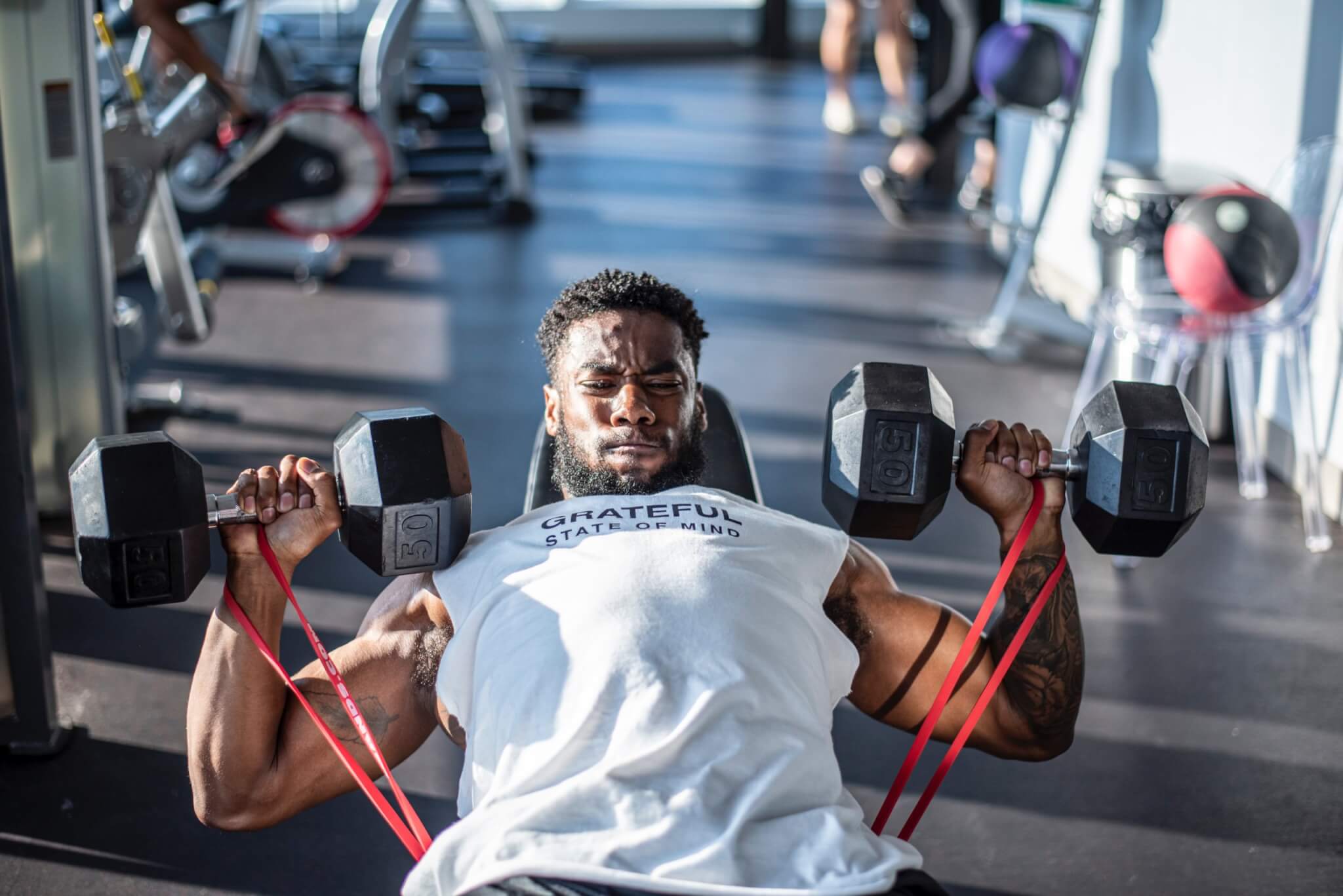Achieving your fitness goals requires a clear plan and dedication. Whether you are aiming to lose weight, build strength, or improve your overall health, setting realistic objectives is crucial. With the right strategies in place, you can turn your fitness ambitions into reality.
Many people struggle with sticking to their plans, often feeling overwhelmed or unsure of where to start. By breaking down your goals and following practical tips, you can maintain motivation and track your progress effectively. You have the power to transform your fitness journey and make lasting changes.
1) Set clear, achievable goals
Setting clear and achievable goals is the first step to reaching your fitness objectives. Start by identifying what you want to accomplish. This could be losing weight, building muscle, or training for a race.
Use the SMART method to create your goals. SMART stands for Specific, Measurable, Achievable, Relevant, and Time-bound. A specific goal, like “run a 5K in three months,” gives you a clear target.
Make sure your goals are measurable. This helps you track your progress. Instead of saying, “I want to get fit,” say, “I will work out three times a week.”
Keep your goals realistic. Setting them too high can lead to frustration. Focus on what you can actually achieve within a set time frame. For example, aim to increase your push-ups by one each week.
Break larger goals into smaller steps. This makes them easier to manage and keeps you motivated. Celebrate each small victory along the way to stay inspired.
Finally, make sure your goals resonate with you. Choose what matters most, as this will help you stay committed. Clear, achievable goals give you direction and pave the way to your success.
2) Track your progress regularly
Tracking your fitness progress is key to reaching your goals. It helps you see how far you have come and what you still need to work on.
You can choose different methods to track your progress. One effective way is to take progress photos. Comparing these photos over time can show changes in your body.
Also, pay attention to how your clothes fit. If they feel looser or tighter, it can give you insight into your progress.
Using fitness apps or wearable devices can make tracking easier. These tools can record your steps, calories burned, and heart rate. Having accurate data can help you make better decisions about your workouts.
Try to check your progress regularly, like once a week or month. Daily tracking can lead to stress and may not show real changes. Focus on the bigger picture, and stay motivated.
3) Maintain a Balanced Diet
Eating a balanced diet is key to reaching your fitness goals. Focus on getting a variety of foods in your meals. This includes proteins, healthy carbs, and good fats.
Proteins help repair and build muscles. You can find protein in foods like chicken, beans, and nuts. Aim to include a source of protein in every meal.
Carbohydrates provide energy for your workouts. Choose whole grains, fruits, and vegetables for healthier options. These foods also give you vitamins and minerals that are important for your body.
Healthy fats play a vital role too. Include sources like avocados, olive oil, and fish. These fats support heart health and help absorb certain nutrients.
Drink plenty of water. Staying hydrated helps your body function properly and can improve your workouts.
Planning your meals can help you stay on track. Set aside time to prepare healthy options for the week. This will make it easier to make good choices when you are busy.
By maintaining a balanced diet, you fuel your body for exercise and support your overall health.
4) Stay hydrated
Staying hydrated is key to reaching your fitness goals. Water helps your body function properly during workouts. It improves your performance and reduces fatigue.
Before a workout, aim to drink 17 to 20 ounces of water about 2 to 3 hours in advance. During exercise, drink 7 to 10 ounces every 10 to 20 minutes. This keeps your energy up and helps you stay focused.
You can also set daily hydration goals. Carry a reusable water bottle to remind yourself to drink throughout the day. Knowing how much you should drink can keep you on track.
Don’t forget to hydrate after your workouts as well. Replenishing fluids helps your muscles recover and reduces soreness. Aim for another 16 to 24 ounces after exercising.
If plain water feels boring, try adding a slice of lemon or some fruit for flavor. This can make drinking water more enjoyable while keeping you hydrated.
5) Create a workout schedule
Building a workout schedule is key to reaching your fitness goals. Start by deciding how many days a week you can commit to exercising.
Be realistic about your time and energy. Consider your daily routine and choose days that fit well.
Mix different types of workouts. Include strength training, cardio, and flexibility exercises throughout the week. This helps keep your routine interesting and balanced.
Plan your workouts in advance. Write down specific exercises for each session. Knowing what to do ahead of time makes it easier to stick to your plan.
Remember to add rest days. Your body needs time to recover and grow stronger. Rest is just as important as the workouts themselves.
Stay flexible with your schedule. Life happens, so be ready to adjust when necessary. Just keep your ultimate goals in mind.
Review your schedule regularly. Modify it if you feel bored or if your goals change. Keeping things fresh will help you stay motivated.


6) Get enough sleep
Getting enough sleep is crucial for your fitness goals. Aim for 7-9 hours of sleep each night. This helps your body recover and perform at its best.
When you sleep, your muscles repair and grow. This recovery process is key for building strength and endurance. Lack of sleep can lead to decreased energy, making workouts feel harder.
Sleep also affects your brain function. Quality sleep helps with memory and focus, which can improve your workout performance. You’ll make better decisions during exercise, leading to effective routines.
Also, pay attention to your sleep routines. Stick to a consistent sleep schedule. Going to bed and waking up at the same time can help improve sleep quality.
If you struggle with sleep, consider your environment. Create a calm, dark, and cool space. Limit screen time before bed to help signal to your body that it is time to rest.
By prioritizing sleep, you support your overall health. Better sleep means better focus, improved workouts, and faster recovery.
7) Mix up your workouts
Mixing up your workouts is a great way to stay motivated and avoid boredom. Doing the same routine every day can make exercise feel like a chore. Variety keeps things fresh and exciting.
Try different types of exercises. Incorporate strength training, cardio, and flexibility work. This mix helps you work different muscle groups and prevents overuse injuries.
Change your workout environment too. If you usually run on a treadmill, take a jog outside. Consider trying a fitness class or an online workout. Different instructors can offer new techniques and ideas.
You can also adjust your workout schedule. If you normally work out in the morning, try evenings or weekends. This change can make your routine feel new.
Set specific days to try something different each week. Challenge yourself by adding a new sport or activity. Explore activities like swimming, cycling, or yoga. Mixing it up keeps you engaged and on track with your fitness goals.
8) Stay Consistent
Staying consistent is vital for achieving your fitness goals. It helps build habits that last. When you stick to a routine, your body learns what to expect.
Setting a regular schedule can make a big difference. Decide on specific days and times for your workouts. Treat these sessions like important appointments that you cannot miss.
Track your progress. Keep a journal or use an app to log workouts and milestones. Seeing your achievements can motivate you to keep going.
Try to mix things up to prevent boredom. Variety can make your workouts more enjoyable. This might mean changing your routine or trying new activities.
Celebrate small wins along the way. Each accomplishment, no matter how small, is a step toward your larger goal. Recognizing these moments can reinforce your commitment.
Remember to be patient with yourself. Results take time, and setbacks may happen. Whether you miss a workout or face challenges, getting back on track is what matters. Consistency isn’t about perfection; it’s about making fitness a regular part of your life.
9) Find a workout buddy
Finding a workout buddy can make a big difference in reaching your fitness goals. Having someone by your side helps keep you accountable. This support can boost your chances of success significantly.
You can start by asking friends, family, or coworkers if they want to join you. They might share similar fitness interests and schedules. If they’re busy, they may know someone who is looking for a partner.
Another option is to check if your gym offers a buddy-matching service. This can connect you with other members who have fitness goals similar to yours.
Working out with a buddy can also make exercise more enjoyable. You can motivate each other and share tips along the way. Plus, you might try new workouts you wouldn’t do alone.
Remember to choose a partner who has a similar commitment level. This increases the chances that both of you will stay dedicated to your routine. With the right workout buddy, you’ll find it easier to stick to your fitness plan and achieve your goals.
10) Hire a Personal Trainer
Hiring a personal trainer can significantly improve your fitness journey. They provide expert guidance tailored to your goals. Whether you want to lose weight, build muscle, or improve your endurance, a trainer can help you create a plan.
A good trainer understands your unique needs. They can consider any physical limitations or health conditions you may have. This personalized approach ensures you exercise safely and effectively.
Motivation is another key benefit of having a trainer. They can inspire you to push harder and stay committed. This accountability is often what people need to reach their goals.
Personal trainers also teach proper techniques. Learning the right way to exercise can prevent injuries and maximize results. This knowledge can lead to better performance and quicker progress.
When choosing a trainer, look for qualifications and experience. It’s also important to find someone who matches your style and personality. Whether you want someone strict or supportive, the right fit can make all the difference.


Building a Strong Foundation
To reach your fitness goals, you need a solid base. This involves assessing where you are now and defining clear, achievable aims for your journey. By understanding your current fitness level and setting realistic goals, you can create an effective plan.
Understanding Your Current Fitness Level
Start by evaluating your current fitness condition. Consider aspects like strength, endurance, flexibility, and body composition. You can use simple methods, such as:
- Fitness assessments: Try basic exercises, like push-ups or running for one minute.
- Health check: Track how often you feel out of breath or fatigued.
Use this information to identify strengths and weaknesses. Knowing your starting point helps you choose suitable activities. It also makes it easier to track your progress. Remember, everyone has different abilities. Don’t compare yourself to others; focus on your own path.
Setting Realistic and Specific Goals
Specificity is key when setting goals. Instead of saying, “I want to get fit,” state what you want to achieve, such as, “I want to run 5 kilometers in 30 minutes.” Write down your goals and make sure they are:
- Measurable: Set clear criteria for success.
- Achievable: Ensure your goals are within reach based on your current fitness level.
Divide your main goal into smaller milestones. For instance, start with a goal of running 1 kilometer and gradually increase the distance. This approach keeps you motivated and allows for adjustments along the way. Regularly review and modify your goals based on your progress and experiences.
Tracking Progress Effectively
Tracking your progress is key to achieving your fitness goals. It helps you stay motivated and make informed decisions about your routine. Using technology and adjusting your plan as needed can enhance your tracking efforts.
Utilizing Technology for Monitoring
You can use various tools to keep an accurate track of your fitness journey. Fitness trackers and smartwatches are popular options. They monitor your heart rate, steps, and even calories burned.
Mobile apps like MyFitnessPal or Fitbit also offer ways to log workouts and meals. Many of these apps provide visual graphs to show your progress over time.
Taking progress photos is another effective method. Snap pictures consistently under the same lighting and angles. Comparing these images side by side can provide a clear view of changes in your body.
Adjusting Your Plan as Needed
Monitoring your progress should guide your fitness plan. If the results are not what you expect, it might be time to reassess your methods.
Keep a fitness journal to note what works and what doesn’t. Write down your workouts, meal choices, and feelings after each session. This information will help you identify patterns.
Consider adjusting your workout intensity or routines based on your records. If you notice little improvement, switching exercises or increasing weights might help.
Don’t hesitate to seek advice from fitness professionals for tailored adjustments. Regularly revisiting your goals ensures they remain aligned with your progress.





